|
What
a celestrial jewel!
How long did the northern
hemisphere have to wait for such an event.
Turning back the time, the comet Hale Bopp in
1996 was a similar event, at least in terms of
brightness. However,
at this time I had not captured
anything photographically,
because the necessary knowledge
of comet photography was clearly lacking.
During my first
observations
on the 9th of July
the initial appearance
of the comet
in the morning
(from 02:15-03:15h MESZ, --> 4-10°
degrees
over horizon)
was seen from the Penserjoch
in South Tirol and presented Neowise in an
estimated brightness of 1.3*
mag, The comet resembled
an almost
glitter-star-like
core
with a very
imposing pale yellow
bright dust
tail apprx. 15° long. Around
mid-July
a distinctly blue ionic tail was
added to the already fanned dust tail. However,
the ionic tail
was hardly
visible visually. Towards the end of July the
comet was still clearly visible in the
evening
with a visual magnitude of 3-4
mag
in an altitude of 25° degrees over horizon.
The core now had a distinctly
green halo.
In no other comet observation were more varied
accompanying phenomena shown photographically
during visual visibility. From rare 'noctilucent
clouds' on July 10th to the 'Airglow' (July
18), meteors (July
13/14) joined the comet images.
Well, Comet Neowise came
closest to Earth on July 23rd at about 103.5
million km (0.69AE), the comet nucleus was
estimated by NASA to be about 5 km. The comet
was discovered as part of the NEOWISE
(Near-Earth Object Widefield Infrared Survey
Explorer) space telescope on March 27, 2020.
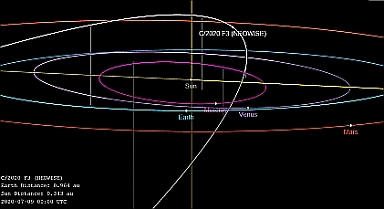
The Position from
09-07-2020. Credit to:
JPL Small-Body Database Browser

Update:23.July,
mag 3,0*
The comet with a green halo
Rottbach / Bayern
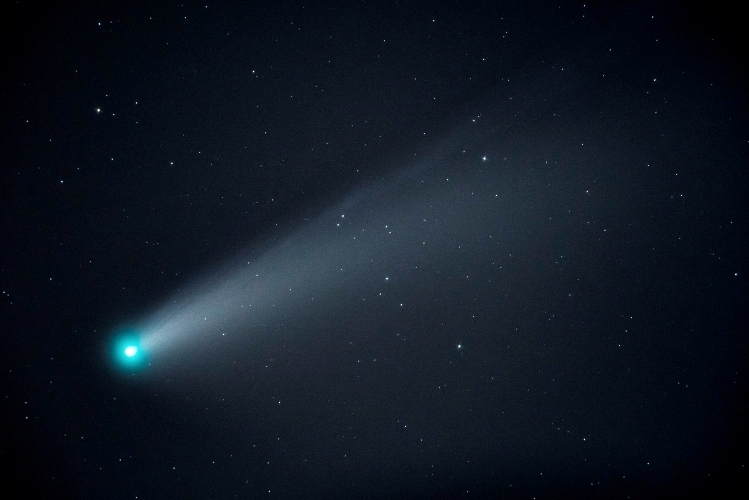
21.23 UTC, Newton 900mm, f4.5 30 sec, ISO 800, Sony a7III
The comet's head is now
green. This is a sign of diatomic carbon, C2,
a gas which emits a verdant glow in the near-vacuum of
interplanetary space. The comet's ion tail is blue.
Once again, carbon is involved. One of the most abundant gases in
comets is carbon monoxide (CO). When CO flows away from a comet's
nucleus, it is ionized by solar UV radiation. Carbon monoxide ions
(CO+) glow blue when they recapture electrons from the solar wind.
The comet's dust tail is wan yellow. It is, simply,
the color of sunlight reflected from comet dust.
source

Update:20.July,
mag 1,9*
Comet Neowise with a strong ion streamer and a dust tail with
vertical bands.
The visual lenghts of the imposant dust tail is now 15-20°
degrees!!!
Luener See bei Bludenz,
Österreich
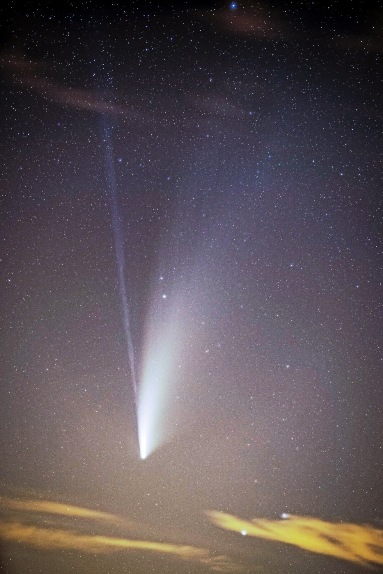
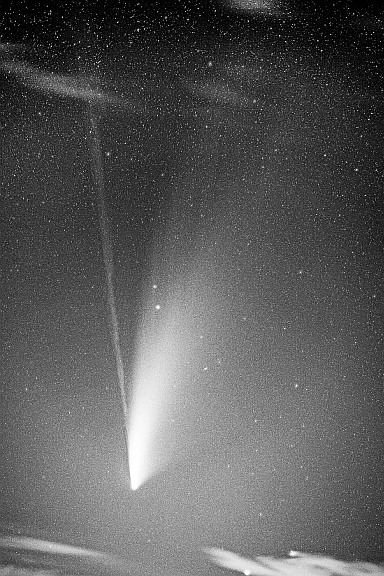
22.55 UT, 1 x 44sec, Iso 800,
140mm, Canon 70-200 USM II, Sony a7III,
Timelapse animation
5MB

Update:18.July,
mag 1,8*
The strong
vertical blue ion streamer gets more visible and the dust tail shows
a contrast rich fan out.
As a
nice beside show
a
greenish airglow occured during the second half of the
night.
Nördlingen, Bayern
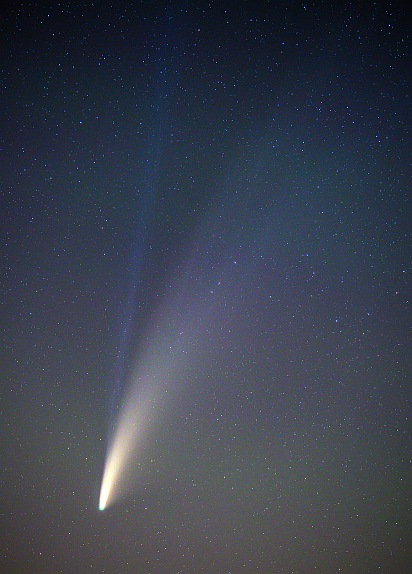
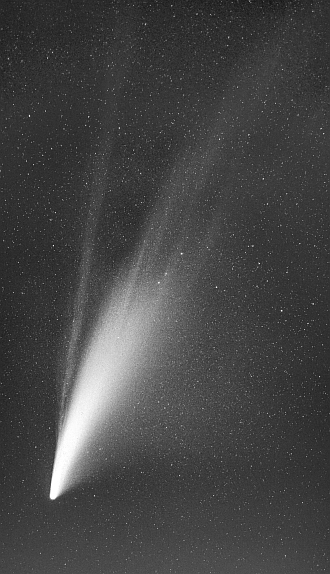
22.57 UT, 1 x 43sec, Iso 800,
140mm, Canon 70-200 USM II, Sony a7III,
Timelapse animation
(timeline of 1:34)
15MB

Update:14.Juli ,
mag 1,7*
Neowise with a strong ion tail
(left) +2 meteors. The dust tail fan out into vertical
stripes.
Auerberg , Südbayern
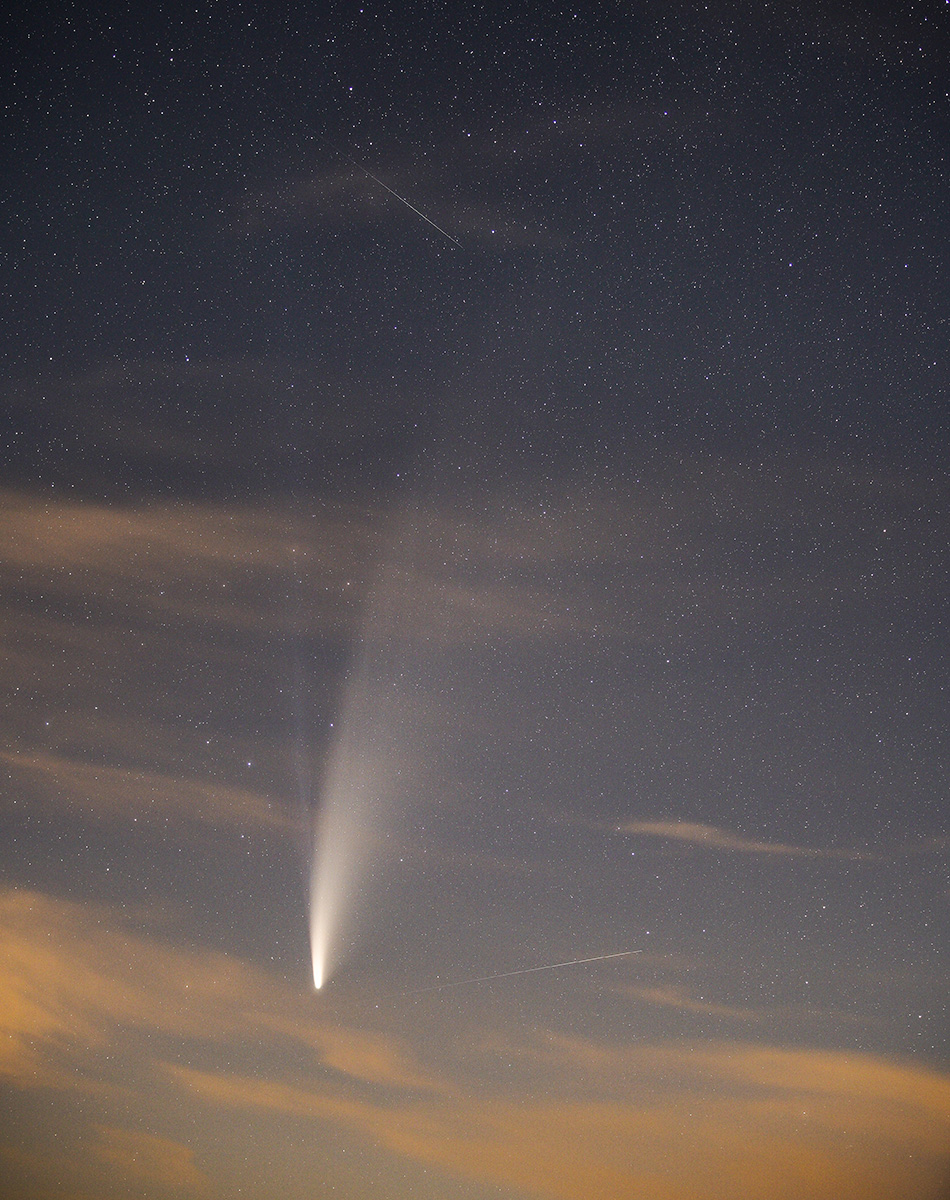
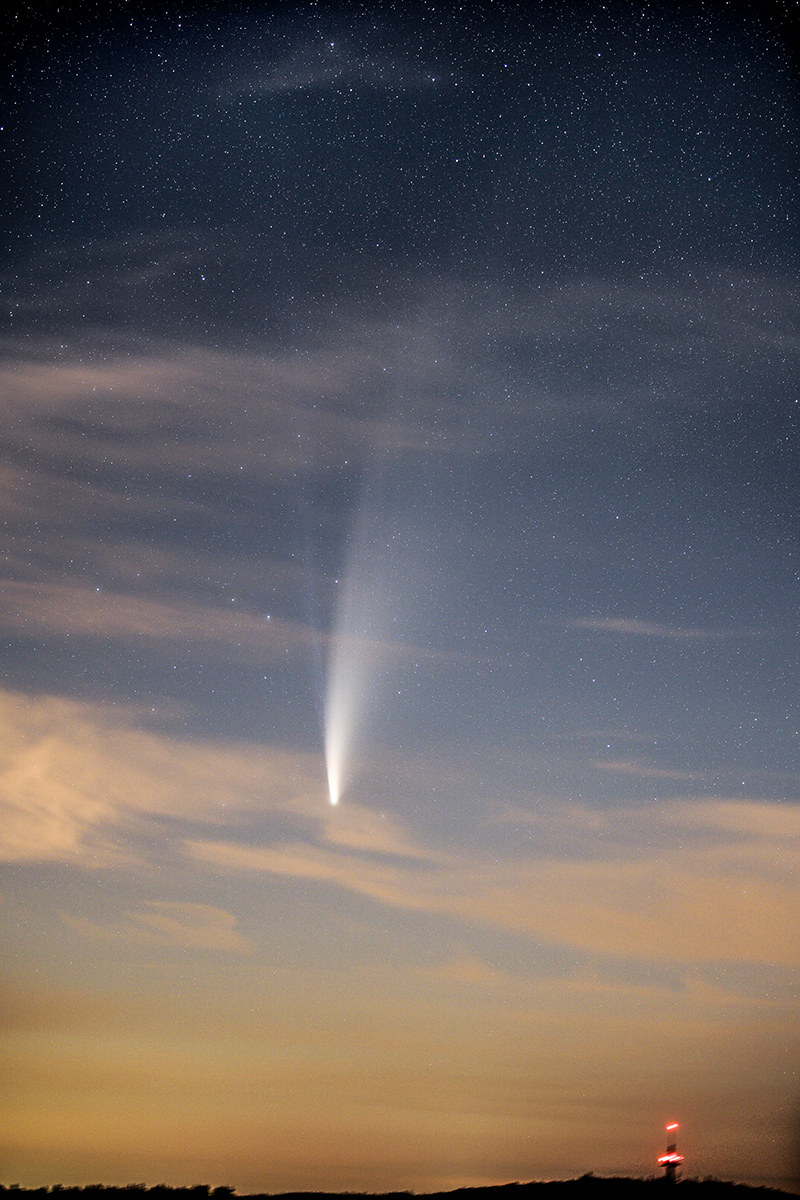
Update:13.Juli,
mag 1,6*
Neowise with meteor from the top
of Peißenberg, South Bavaria
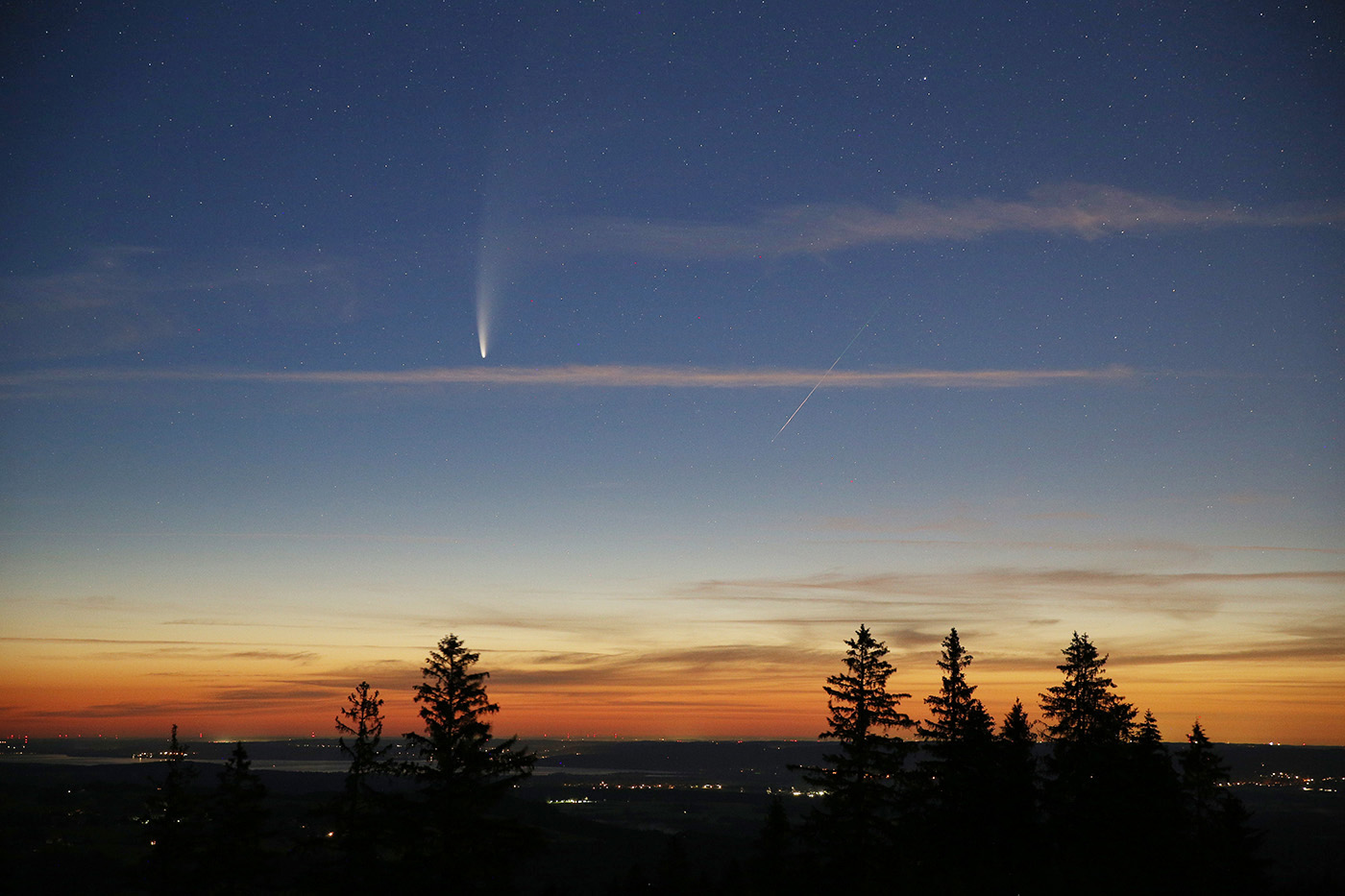
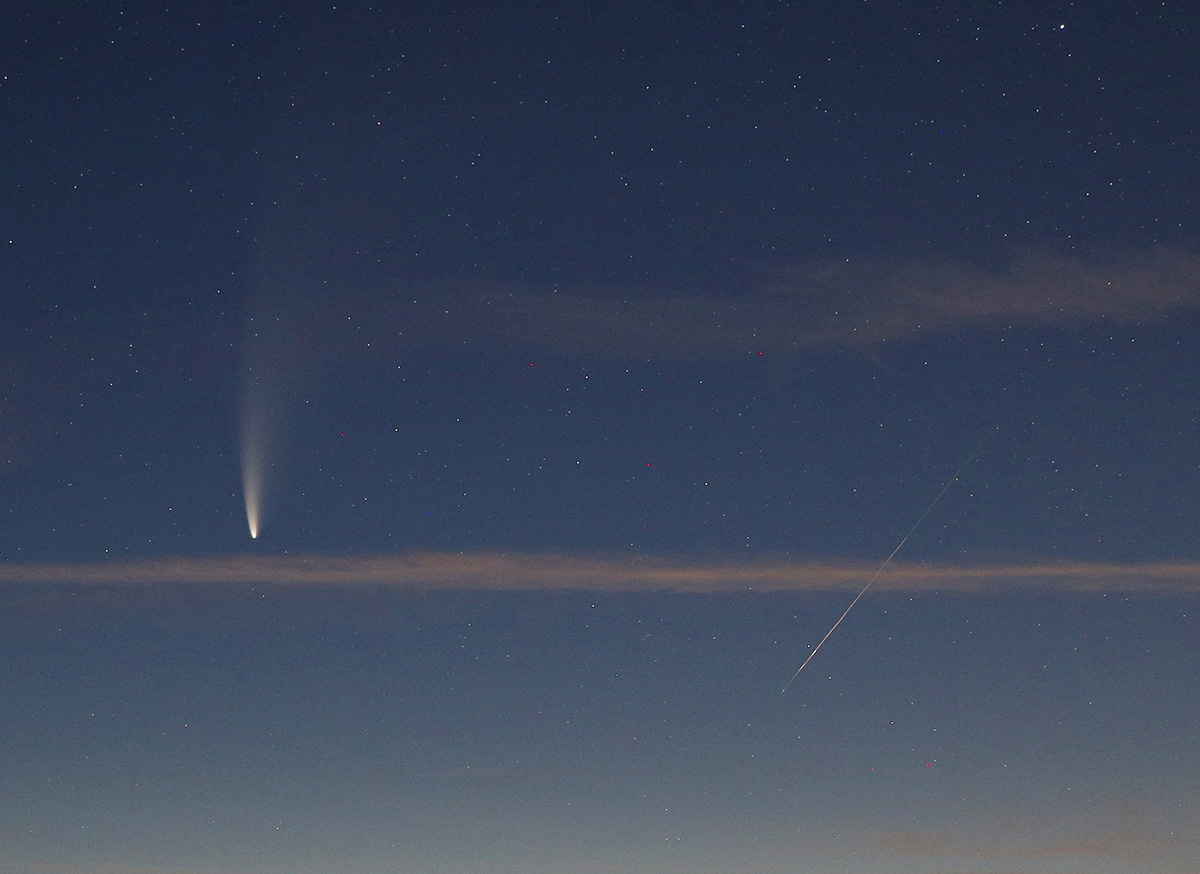
1.08 UT, Canon70-200 USMII, Sony a73, 63mm, f3.2,48s,ISO1600
Timelapse animation
(timeline of 1:47h)
23MB

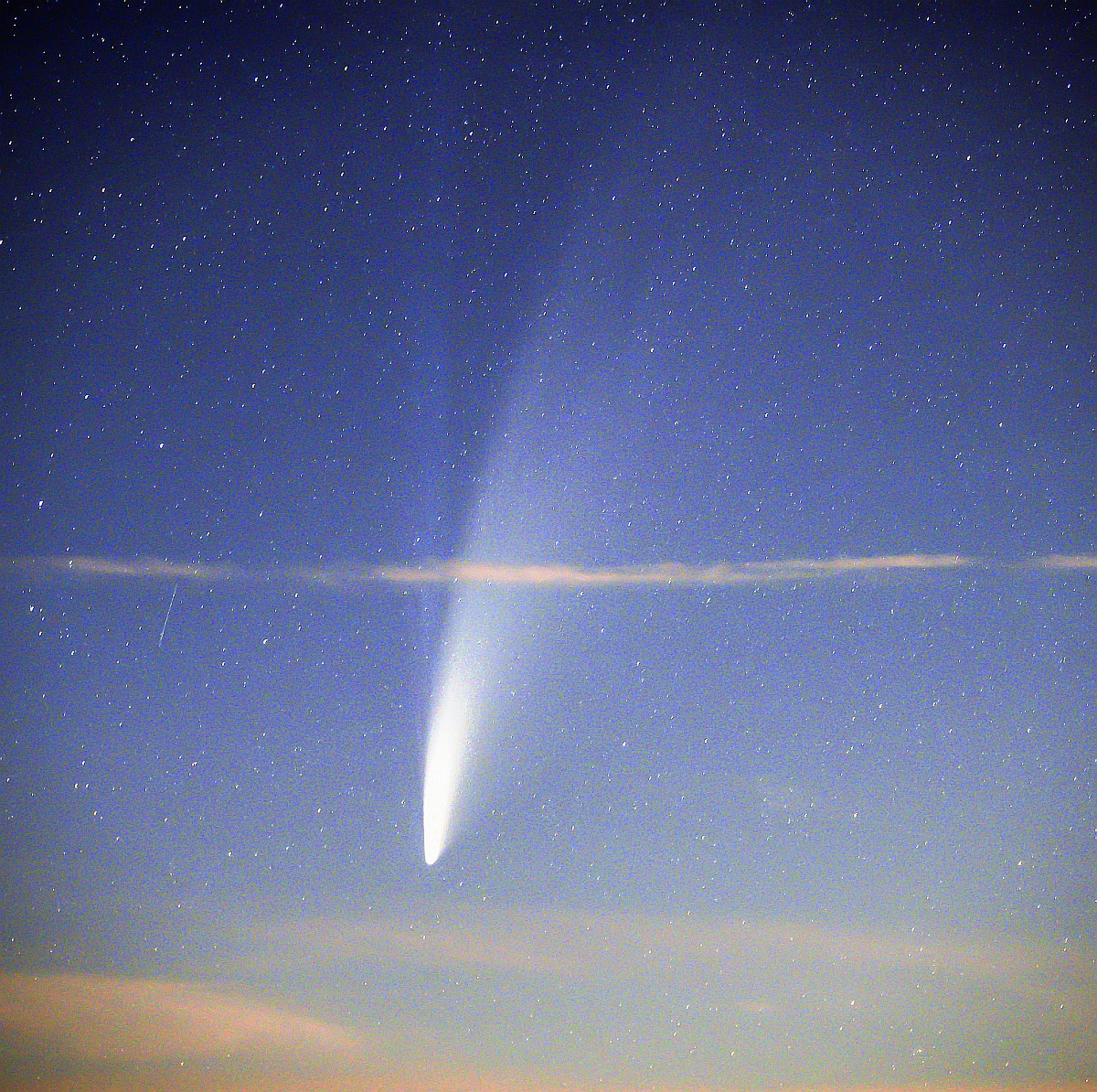
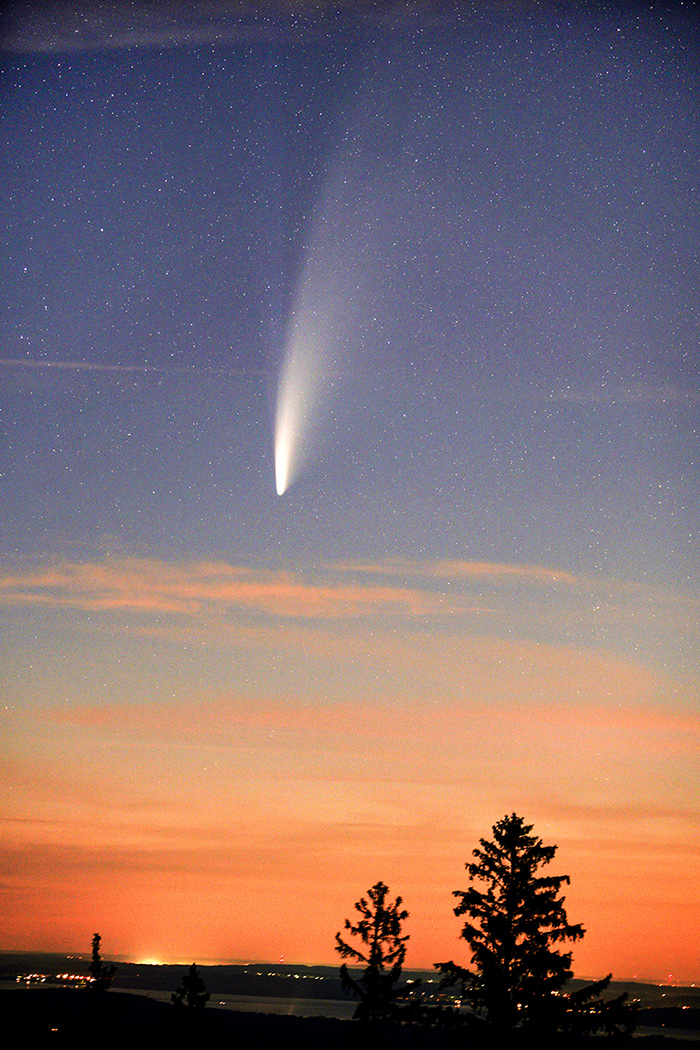
Update:12.July,
mag 1,5*
Neowise in clouds. Only one image
in a one minute cloud gap....
Gepatsch Ferner, Austria 2750m
osl. Night from the 12th to 13th.

.. but i like it
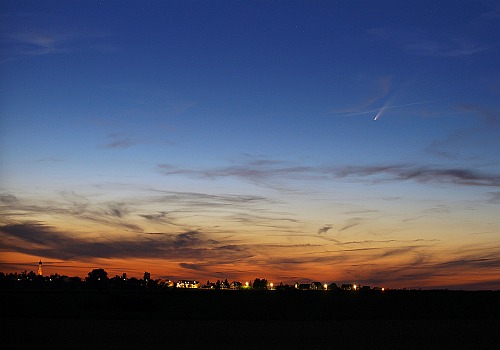
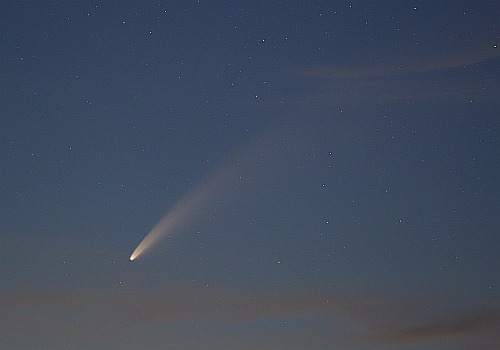
20:30- 22:00 UTC
Neowise photo taken from
Germerswang in direction Aufkirchen. Evening of the 12th of July.
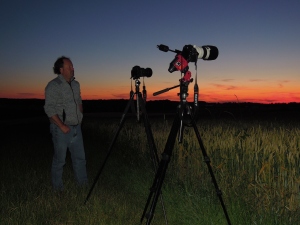
Home hills of Germerswang
Timelapse animation
(timeline of 0:28 min)
58 MB

Update:10.Juli,
mag 1,45*
Neowise above noctilucent clouds
!!! A very seldom convergence!
Maisach, South Bavaria
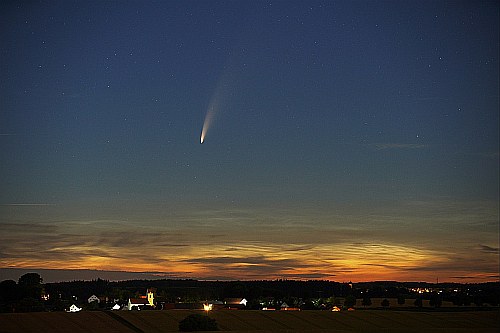
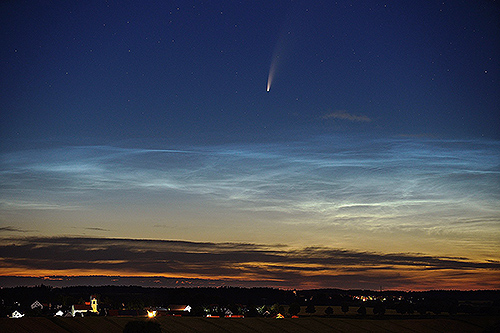
1.36 UT, 3.2sec, ISO 3200, Canon
f3.2, 120mm
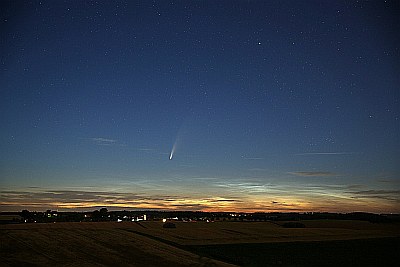
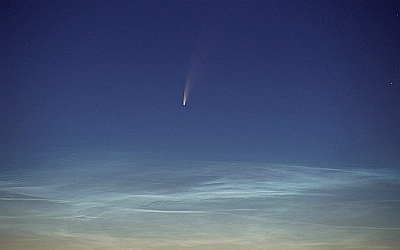
Timelapse animation
(timeline of 1:12h)
20MB

Update:
09.Juli 2020,
mag 1,3*
Comet Neowise photographed from
the Penser Joch (2211m o.sl) with view to the Wilde Kreuzspitze
(3148m o.sl) belonging to the Zillertaler Alpen, Südtirol Italy

4sec, ISO 3200, Tamron f5.6,
135mm
Comet at 01:15 UT (03.15 MESZ)
Timelapse animation
(timeline of 1:02h)
26MB

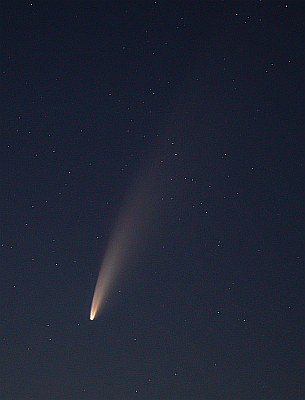
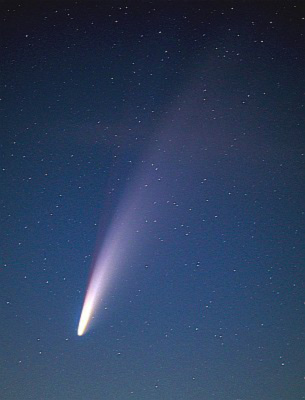
1.11 UT, 4sec, ISO 3200, Tamron f5.0, 150mm (under) crop
ca.3.5x, Sony a7III
Right: This contrast-enhanced photo shows the comet
with a rare so-called third red one!
tail.
(red thin vertical tail
trace)
The second
blue ion tail is barely visible here.
After some research, the red tail appeared on other photos
(e.g.
APOD)
too.
This phenomenon indicates neutral sodium atoms which are
released when the comet warms
extremely
up
in the close range to the sun.
The sodium may be electrified by
the strong
ultraviolet sunlight and appear red in the vacuum of
space.These observations of comets or photographs are
extremely rare!
During
the
further
observations
the
'second'
blue ion tail becomes stronger and more clearly visible, while
the red tail disappeared.
.jpg)
Here the discovery composite photo from
27.03.2020. Info & Image credit to

*mag
= > light magnitude:
Up to
mag
+3 or +4
stars are visible nearby cities with the naked eye, in
very dark areas the seeing limit can reach up to
mag +6-7.
The more higher numerical value is given, the more weaker
are the objects. E.g.
- 4,7 mag, Venus glittering;
- 1,0 Sirius,
brightest star;
+ 3,5
M31 Andromeda,
pale shiny oval)
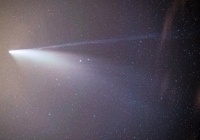         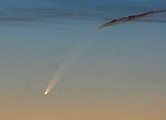  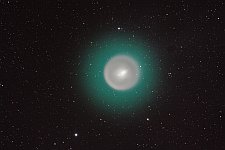
All comet observations
from 2001 up to now ..
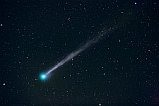  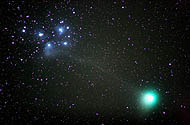 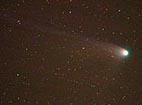        



|
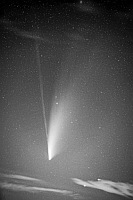
























.jpg)
